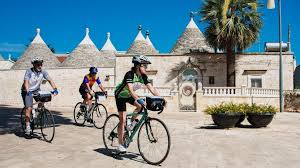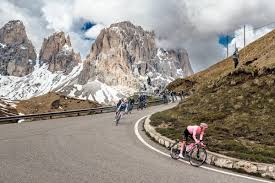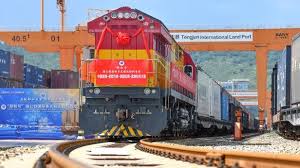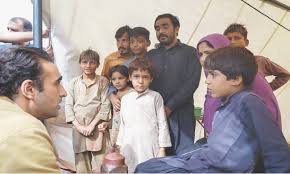La Bella Vita: The best cycling escapes in Italy

Rome: Midwinter in London and it seems every week we are buffeted by another storm barreling across the Atlantic. Just going for a walk around the block feels like standing on top of K2.
Riding is out of the question, at least for this softie.
As much as I love Christmas, cyclocross and all things wintry, this is getting depressing. So I am escaping to Italy, where — in my head — it is always summer, every bike is a gleaming Colnago Master, and one can live quite happily on a diet of pasta, gelato and coffee.

One of the most precious aspects of road racing is the way it affords glimpses into European landscapes rich in history and culture. On the route of a typical Giro d’Italia there are a multitude of fascinating stories — and that’s before the bike racing even starts.
It is one of the idiosyncrasies of the Giro d’Italia that it rarely does justice to one of the country’s most beautiful regions, the lakes. Often, after its leisurely journey from the south, the race is in such a hurry to hit the high mountains that it shoots straight past.
We can forgive the Giro its haste, but there’s really no excuse for anyone else to miss out on the sublime attractions of the Lakes of Garda, Como, Maggiore and Lugano, as well as their many smaller, less famous neighbors.
The lakes sprawl across the north of Italy, with Lake Garda furthest east, not far from fair Verona. Maggiore and Como sit just north of Milan. The top of the former crosses into Switzerland. Further north lie the Alps and Dolomites, and for anyone travelling from Paris or London, the process of arrival accentuates the beauty.
“On into Italy we went – a rapturous progress through a wild luxuriance of corn and olives and figs and mulberries and chestnuts and frescoed villages and clamorous beggars and all the good old Italianisms of tradition,” wrote Henry James.
After the Swiss mountains – sublime but chilly – dropping to this verdant, almost-Mediterranean world with its azure waters, abundant lemon trees and riotous gardens of camellias and oleander was most welcome for anyone escaping northern Europe.
When they were formed at the end of the last ice age, roughly 1.5 million years ago, the glaciers pushing down from the Alps and Dolomites carved out deep trenches, then melted into lake water. And as they moved the glaciers churned up magnesium-rich limestone, depositing it onto what would become the sides of the lakes. Which is why the ground is so fertile for growing olives, fruit and flowers.
Tourists have been visiting since Roman times, attracted by the landscape and climate, the opportunity to mess about on boats, and the civilized towns and villages sprinkled along the shores. Wealthy Italians have summer houses by the lakes, George Clooney lives by Lake Como and reportedly enjoys zooming around the local roads on his Harley Davidson.
The literary heritage of the area is deeply intertwined with tourism. The first writing eulogising the lakes was that of Catullus, the poet of the late Roman Republic whose family lived in Verona and had a villa near Sirmione on Lake Garda.

Amongst his many love poems, Catullus wrote of how happy he was in Sirmione. Perhaps it was good to get away from Rome, where the object of his adoration, a woman named Lesbia, was being distinctly unresponsive to his charms. Virgil, one of the greatest Roman poets, was influenced by Catullus and also visited Lake Garda. And perhaps this connection between place and poetry would have been forgotten were it not for the Romantic poets of the 19th century. Shelley and Byron visited the lakes and were enthused by their beauty.
In 1880, seeking out Catullus’ ruined villa in Sirmione, Lord Alfred Tennyson wrote, “There to me through all the groves of olive in the summer glow, There beneath the Roman ruin where the purple flowers grow.”
Henry James travelled extensively in Italy between 1869 and 1907, staying often in Rome and Venice, but also spending time at Lake Como. Over the course of those years James wrote many essays and stories about Italy, published in various periodicals, then collected in one volume in 1909 as Italian Hours. Of Lake Como, James’ entry was brief but lyrical, skewering the extravagant lifestyle that the location seemed to inspire in wealthy American tourists.
“It is all so unreal, so fictitious, so elegant and idle, so framed to undermine a rigid sense of the chief end of man not being to float for ever in an ornamental boat, beneath an awning tasselled like a circus-horse, impelled by an affable Giovanni or Antonio from one stately stretch of lake-laved villa steps to another…”
James was ever more interested in affairs of the heart than stunning landscapes and noted Lake Como’s reputation for illicit romance: “It is commonly the spot to which inflamed young gentlemen invite the wives of other gentlemen to fly with them and ignore the restrictions of public opinion… Lake Como is the place to enjoy a deux — it’s a shame to be here in gross melancholy solitude.”
The team is nervous as they wait for the signal to attack. Timing is crucial. Get it wrong and it’s all over. A lifetime of regret waits for them. The back of the van is sweltering. After all, it is the height of the Italian summer in a city choked with traffic.
Their leader, Charlie Croker, is waiting for the perfect moment. On a job like this you can only plan so much, the rest has to be instinct. Wait, wait…
When I was 12 years old, the 1969 film The Italian Job, starring Michael Caine, was possibly my favorite film. It was frequently on television (these were the days when a decent film being on television still felt like an event), and it was always on at Christmas. From the memorable opening scene, in which a lone sports car swings along a high Alpine pass, only to meet a fiery end at the hands of the mafia, the film lightly treads a path between drama and comedy.
The plot is that a team of British thieves travel from London to Turin to steal a huge shipment of gold bullion. Using the cover of an international football match between England and Italy, the gang create a huge traffic jam in the center of Turin, surround the convoy of armored cars containing the gold and pull off the heist. Having quickly loaded the gold into three waiting Minis, the team make their escape.
But having created gridlock, the gang cannot get out of the city by road. This is where their plan, and the film’s script, becomes truly ingenious. The three Mini Coopers (red, white and blue of course) follow an unorthodox route away from the scene of the crime. They rattle down the Baroque stone staircase of the Palazzo Madama, skid through the Galleria San Federico and Galleria dell’Industria Subalpina shopping arcades, then dive diagonally across the steps of the Chiesa di Gran Madre di Dio, one of Turin’s most beautiful churches, where the uncouth gangsters interrupt a wedding.
Now pursued by the local police, the plucky — but ultimately hapless — Brits make a totally pointless trip up onto the roof of the Palavela arena, then another pointless excursion onto the iconic Fiat rooftop test track. Eventually, by driving through a sewer system, the Minis emerge on the empty roads outside the city.
The ending? It upsets me too much to write about it. It is perfect, and yet so incredibly annoying. It winds me up just thinking about it.
The Italian Job is now something of a period piece. Enjoyable for its sharp dialogue, the performances of its leading actors such as Caine and Noel Coward, and its picturesque backdrop, but morally problematic. The tone of the film is essentially xenophobic, indeed the whole premise of the film is too.
The Italians are portrayed as a series of stereotypes — the mean mafioso, the overweight mamas, the beautiful sleek-haired women and inept policemen. The Brits have few problems executing the heist; only their own over-confidence scuppers them at the end. The film captures the beauty of Turin, yet since its release the film has not been celebrated by the city’s inhabitants. Visit this historic jewel of northern Italy and you’ll find scant reference to the cockney crime of the century.
Turin deserves more. Nestled beneath the snow-capped Alps, the capital of the Piedmont region is renowned for its elegance and civility. In the 16th century it was the capital of the Duchy of Savoy, a small but influential state tucked between France and Italy and drawing upon the culture of both countries.
In 1720 the Duchy became the Kingdom of Savoy, then later the Kingdom of Sardinia. Italy’s new monarchy in the 19th century came from Turin, and for a short time it was capital of the newly unified Italy.
Unlike some of the cliched portrayals in The Italian Job, the Piedmontese have a reputation for being restrained, dignified, precise and perhaps a little chilly. The city is a reflection of this supposed character. Its streets are laid out in a grid pattern based on an ancient Roman template, and the architecture of the historic center combines the baroque elegance of Guarano Guerini and the classicism of his successor Filippo Juvarra. Both men were integral to the expression of the power of the Duchy of Savoy through its architecture.
Despite losing its political power, Turin remained an economic force as the 20th century began, forming part of a strong commercial triangle with Milan and Genoa. Much of Italy’s automotive industry is based in the city, including the headquarters of Fiat, Alfa Romeo and Lancia. In the past three decades the city has switched its focus from declining industries into innovative start-ups, technology and the aerospace industry.
Industry is important, of course. But so is coffee and chocolate. If you head to Turin (or perhaps just imagine yourself there, start the morning at the Café Bicerin on the Piazza della Consolata. Turin’s most famous café has been trading since 1763, selling coffee, confectionary (Turin is Italy’s chocolatier) and naturally the drink after which it is named. This combination of homemade chocolate, smooth coffee and milk foam, served in large crystal glasses, is the symbol of its home city. An old city guide describes it as “… the favorite drink of the morning: ministers, magistrates, professors, shopkeepers, bellboys, baskets, street vendors and sellers, etc. all willingly spend their money to satisfy their stomachs economically.”
Spring in the City of Flowers. Blessed by the warm Mediterranean sun, San Remo is a good place to grow. Avocados, grapefruits, cactuses, roses, begonias and … writers.
For all its 300 kilometres, Milan-San Remo is really just about one climb and one descent. The climb takes the peloton away from the coast road, just as they enter the town. Up to the village of Poggio, then a sharp left turn and down to the Via Roma by a tortuous descent. Naturally our eyes are on the racing, but it’s hard to miss the many greenhouses lining that road. The sun gleams across those expansive fields of glass. For over a hundred years San Remo has been a major producer of commercial flowers and plants.
Inside the greenhouses the temperature and irrigation is carefully controlled, refining the already favorable climate offered by the town’s position. Even without greenhouses a grower can do well. The town sees a lot of sunshine, low levels of rain, and the surrounding mountains protect it from damaging winds.
The name of Calvino is intrinsically connected to the development of San Remo’s floriculture. In 1925 the agronomist Mario Calvino was appointed director of Orazio Raimondo, an institute of experimental floriculture. Calvino was originally from San Remo and on his appointment he returned to his hometown, after a period working in Cuba.
He brought with him his wife Guiliana, also a scientist, and his two-year-old son Italo. Born in Cuba, Mario and Guiliana had given their boy his rather unusual name to remind them of their native Italy. Once they were back in San Remo and Italo eventually went to school, it seemed just a touch nationalistic.
While his father set about cultivating new breeds of plants and fruit, Italo attended the local school on the Via Roma. The family divided their time between the Villa Meridiana, an impressive building that was home to the institute, and Mario’s family farmland at San Giovanni on a hillside above the town. Italo’s brother Floriano was born in 1927.
Young Italo excelled at his studies but didn’t follow his family’s scientific leaning. He was drawn to literature, though as a young man he enrolled to study agriculture, presumably to please his father. In politics, however, he did follow his parents’ example. Both were from republican families and both were anti-monarchical and atheist.
In 1941 Italo obtained his high-school diploma and enrolled at the University of Turin. In January 1943 he transferred to the University of Florence, still studying agriculture while his real ambition lay in the theatre. He wrote frequently to his San Remo friend Eugenio Scalfari about ideas for plays. But any sense of a brewing conflict with his parents was to be eclipsed by the war.
When Germany invaded northern Italy in 1943 the Calvino brothers dodged the fascist draft and took to the hills with the Garibaldi partisan brigade. The experience later translated into Italo’s first novel The Path to the Nest of Spiders, a coming-of-age story set in 1940.
After the war Calvino settled in Turin and began to work at the now-legendary publishing house Einaudi. There he met the principal literary figures of the day — Cesare Pavese (who gave him valuable editorial advice for that first novel), Natalia Ginzburg and the poet Alfonso Gatto. Calvino’s literary output progressed in parallel to his editorial career at Einaudi. The unexpected success of The Path to the Nest of Spiders put pressure on Calvino to produce a follow-up.
For several years he struggled to express himself, then finally, in an intense burst of creativity during the summer of 1951 he wrote The Cloven Viscount, the story of a seventeenth century viscount split in two by a cannonball. Departing from the neo-realist style that had launched his career, Calvino moved into the fabulist. The book was widely taken to be an allegory of the developing Cold War and, to a degree, his own political views. Calvino had been a committed Communist since moving to Turin — it was a belief system that went hand in hand with the position in the literary world — but in the early fifties he began to have doubts.
In 1954 Giulio Einaudi commissioned Calvino to collect traditional Italian folk-tales. A Brothers Grimm for Italy. Calvino spent two years finding stories and translating them from dialect. The resulting book was a seminal moment in Italian literature.
The experience also encouraged Calvino to push the boundaries of the fantastic, the magical, the fabulous. His next novel was The Baron in the Trees, a playful tale about a 12-year-old Baron who has an argument with his father (over his father trying to make him eat snail soup) and responds by climbing into the trees in his family’s garden. The boy stays in the trees for the rest of his young life, reading, adventuring, even having a love affair. If the theme of the book is about independence and political commitment, the setting — a small town on the Ligurian riviera — is clearly influenced by his childhood among the flowers and exotic plants of San Remo.
As a sport, cycling is quite domineering. It discovers new places, secrets of the landscape, and envelops them into its own mythology. Think of the iconic mountains of the grand tours, names like the Izoard, Alpe d’Huez, Mortirolo, Angliru. These places were not famous until cycling came along and blessed them with its colorful drama.
Mount Etna, however, is a different beast. It doesn’t need cycling. It is older and bigger and more dangerous than any puny bike race. Foolish men may choose to pedal their shiny machines across its blackened slopes but Mount Etna cares not. And the stories of the Giro d’Italia are mere whimsy compared to the stories already told about the volcano.
The first time the Giro visited Etna was in 1967. After a circuit race on the Monte Pellegrino circuit in Palermo the race convoy undertook a painfully slow train journey across the island to Catania, the town that lies at the foot of Etna. The riders were not impressed. In protest at the lengthy transfer — now common in grand tours, then a novelty — they rode slowly as a pack for nearly the whole stage. Only in the final three kilometers of the Etna climb did they allow some action, and by then it was too late to create significant time gaps. The organizers’ grand plan to introduce a mythological new place to the Giro had backfired. Scarred by the experience, it was to be 22 years before they visited again.
If the Giro visits Sicily it is usually within the first week (because the race invariably finishes in the north of the country and climaxes either in the Alps or the Dolomites) so Etna, tough as it is, can only ever be a prelude to the later mountain stages. A cruel fate for such a proud mountain. One gets the sense that Etna is waiting for the right moment to exact revenge on the organizers, in its own inimitable style.
Mount Etna is one of the most active stratovolcanoes in the world. Volcanic activity in the region can be dated back 500,000 years, when eruptions occurred under the sea off the Sicilian coast. Around 170,000 years ago the activity shifted to the current location of the peak and craters. Over time the continual eruptions of lava built up the mountain that we see today. There are five principal craters at the summit. These produce the most spectacular vertical eruptions.
Being so high and far from inhabited buildings, however, means that these eruptions are rarely dangerous. More threatening are the many vents that line the flanks of the volcano. Eruptions through these vents are not spectacular (think oozing rather than spurting lava) but they can occur anywhere, and many of the vents are close to roads, villages, ski resorts.
Volcanic activity on Etna is almost constant. There is always something brewing. The biggest eruptions have the power to re-shape the mountain’s summit, to throw up huge clouds of ash, to bury houses. Since 2000 Etna has seen four major flank eruptions and six summit eruptions. One of the largest was in 2002.
A column of ash plumed into the air and could easily be seen from space. Seismic activity made the flanks of the volcano shift by two meters, undermining the foundations of many houses in the area. The ski stations at Rifugio Sapienza and Piano Provenzana were both buried in ash and had to be rebuilt.
Mount Etna is an intimidating and eerie place. As recently as early February 2022 an eruption propelled ash six miles into the air and created a violent volcanic storm, with lightning crackling across the night sky. Etna does not need cycling’s mythology; its awesome power has inspired its own, far more ancient, stories.
The Roman god of blacksmithing, Vulcan, has his forge beneath the mountain. In Italian the volcano is known as Mongibello, literally ‘beautiful mountain’.
Readers familiar with Arthurian legends may recognize the name Mongibel as the home of King Arthur’s half-sister, the charismatic and powerful enchantress, Morgan le Fay. Mongibel appears in Floriant and Floret, a thirteenth century Arthurian romance by an anonymous author, the manuscript of which resides in the Archives and Manuscripts Division of the New York Public Library.
It seems odd for a story about King Arthur to involve Sicily; the explanation lies in the fact that the Normans, and their neighboring Bretons, co-opted Arthurian legend into their own literature. Arthurian legends then became blended with Sicilian folklore during the Norman conquest of Sicily in the second century AD.
Floriant, son of the King of Sicily, has had the misfortune of being dispossessed of his inheritance by a disloyal house steward who kills his father and lays siege to his mother. Abducted at birth by Morgan le Fay, Floriant is kept imprisoned in her secret castle, Mongibel, until he is fifteen. Then he sails away from Sicily on an enchanted ship, eventually landing in Britain where he becomes friends with King Arthur. In Britain Floriant learns the truth about his parents and, vowing to avenge his father and free his mother, returns to Sicily with King Arthur’s fleet.
Several battles ensue. The treacherous house steward and his sponsor, the Emperor of Constantinople, are resoundingly beaten. And Floriant even finds time to fall in love with the Emperor’s daughter, Florette. Floriant is crowned King of Sicily and Emperor of Constantinople to boot. He lives happily with Florette for many years. Then he succumbs to pride and vanity, going off fighting again when there is no need to do so. Finally he returns to Sicily to settle down with Florette.
One day, whilst out hunting, Floriant follows a shining white deer up Mongibel and into a castle at its summit. There he finds Morgan le Fay, who tells him that he will soon die. Le Fay sends three fairies to fetch Florette. After that no one ever sees Floriant and Florette ever again.
For the last few years my family and I have taken our summer holiday in Venice. We stay on the Lido di Jesolo, a long promontory of land at the edge of the lagoon with miles of sandy beaches facing the warm gentle waters of the Adriatic. Bribing the kids with promises of Venetian masks and spectacular gelato we take a ferry past the candy-colored buildings of the Lido and the lush gardens of the Biennale, then thread a needle between all the various watercraft piloted by men in sunglasses talking on their phones, to dock at San Zaccaria.
Once we’ve dragged the kids away from stalls selling cheap plastic souvenirs, the aim is to escape the chaos of the Piazza San Marco as quickly as possible. In Venice it doesn’t take long to get away from the crowds, and it doesn’t take long to get lost. Whether or not you know where you’re going, a walk has a certain rhythm; in the shadowed alleyways you continuously turn left and right, every so often emerging into a sun-bleached square with a café and a church. Away from the center there are quiet streets with barely a person around, all the houses shuttered and dark. There is always building work going on, a reminder of the city’s fragility. And some of the canals are lined not with gondolas but with low-slung barges carrying sand or timber.
Venice is unique not only in its geography. It’s the only city I can think of that is one-third museum piece, one-third living city, one-third playground for the rich, famous and arty. Perhaps this multi-faceted nature is why I find something different every time I visit. A grey day brings a sense of melancholy, of lost wealth and long-forgotten parties.
The August heat can be oppressive, making one want to escape into the lagoon on a speedboat with a beautiful woman at your side. And a visit to the Collezione Peggy Guggenheim reminds one of all those who have trodden the same paving stones in years past — Hemingway, Wilde, Miro, Picasso. This sense of shifting identity is why so many artists come here, and why Venice inspires many great works. Every city has an identity but Venice is so layered, so rich. It is your enigmatic great-aunt who has a thousand stories, if only she’d tell them.
With its power and influence as a republic long-vanished, and its buildings slowly sinking, Venice’s beauty is stunning but shallow. One senses darkness beneath the surface. Walk through the deserted streets at night and you will find yourself glancing over your shoulder. Countless books and films have used the city as a romantic backdrop but the most memorable are those that have played on its inherent creepiness.
Now the city is quiet. As Italy’s appalling outbreak of Coronavirus took hold, the authorities prematurely ended the Carnival and closed the city to visitors. The restaurants around San Marco are closed, the flocks of pigeons have no silly tourists to perch on. No boats on the canals means the water — usually a murky green — has become clearer. The sediment usually churned up by traffic has settled.
Fish and crabs have been seen. A pair of swans were filmed gliding under a bridge. Air pollution has fallen. And while some have written of this resurgence of nature as a positive side-effect of the pandemic, it doesn’t reassure me. Venice, more than most cities, is an expression of human ambition and ego and determination. Once one of the most powerful places on the planet (its wealth came from its pivotal position on the east-west trade routes), Venice’s riches may have shifted from business to culture, but it has always thrived on the vivacity and elan of its people.
The cafes should be serving coffees with those little caramelized biscuits on the saucer. The gondoliers should be shocking tourists with their prices. The Carabinieri should be steering their boats down the Grand Canal. Those little churches should still be a cool oasis away from the crowds. Venice has seen a lot, come through it all, and its life will return this time too. I’ll be there again, just another sweaty English tourist, hopelessly lost and in love.





